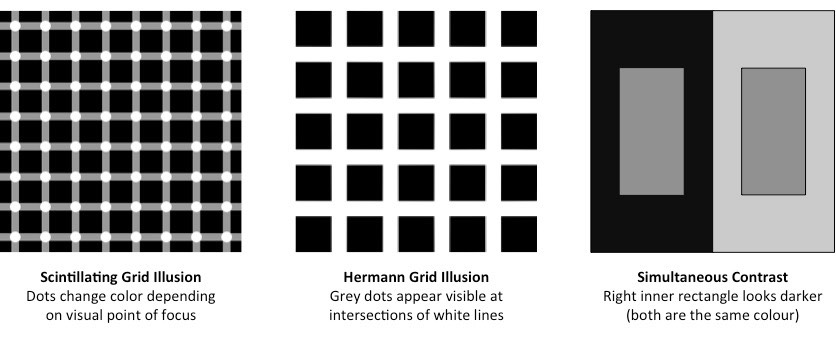The human eye has the capacity to see the edges of objects in greater contrast (edge enhancement)
- This is why the eye can detect shapes and outlines in dark conditions, but not detect finer details
Stimulated photoreceptors will activate opposing bipolar cells but inhibit adjacent bipolar cells
- This is known as vertical activation and lateral inhibition respectively
This will increase the contrast between the light and dark borders of an object due to the fact that:
- The light edge is not being laterally inhibited by photoreceptors in the adjoining dark region (hence appears lighter)
- The dark edge is not being vertically activated but is receiving lateral inhibition from the light edge (hence appears darker)
Mechanism of Edge Enhancement in the Retina

Optical Illusions
Edge enhancement can give rise to a number of different optical illusions, including:
- Scintillating Grid Illusion – Dots appear to change colour as the point of visual focus is adjusted
- Hermann’s Grid Illusion – Grey spots appear to be visible at the intersection between the white lines
- Simultaneous Contrast – A inner grey square appears darker when encased in a white square as opposed to a black square
Types of Optical Illusions

